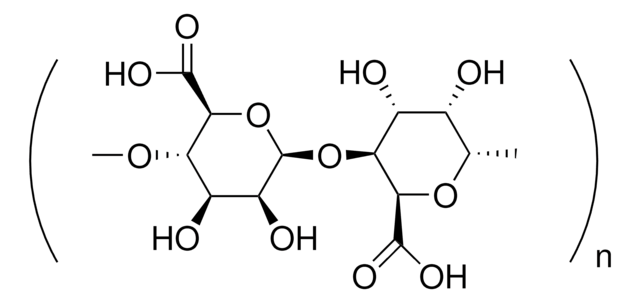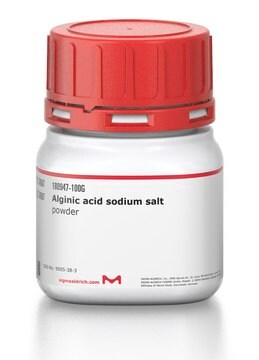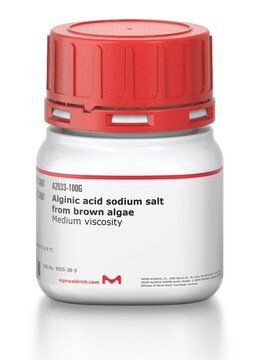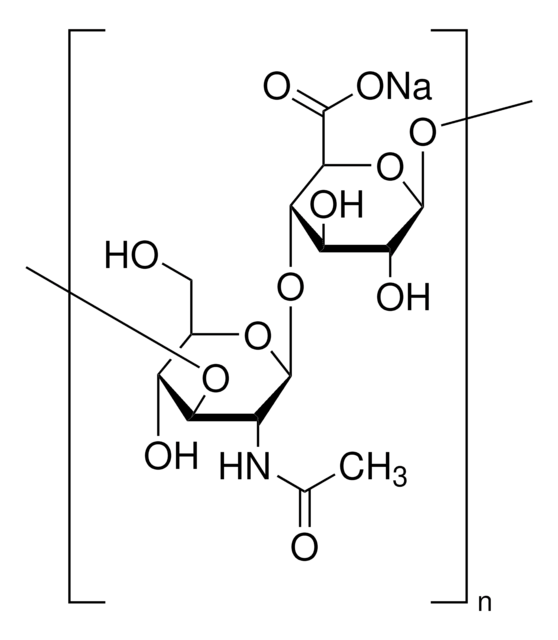933597
Poly(Guluronate)
low endotoxin
Synonym(s):
Alginate, Bioink, Bioprinting, Guluronic Acid, Hydrogel, Ionic, Sodium Alginate
About This Item
Recommended Products
description
GPC 5-15 kDa
Quality Level
form
(Solid chunks, fibres or powder)
impurities
<125 EU/g Endotoxin
<5 CFU/g Bioburden(Total aerobic)
<5 CFU/g Bioburden(fungal)
color
white to off-white
storage temp.
2-8°C
Related Categories
General description
Application
Features and Benefits
- Sterile, low endotoxin
- Batch control offers reproducible models for preclinical toxicology testing and drug screening
- Extended shelf-life & stability
Storage Class Code
11 - Combustible Solids
WGK
WGK 3
Flash Point(F)
Not applicable
Flash Point(C)
Not applicable
Regulatory Listings
Regulatory Listings are mainly provided for chemical products. Only limited information can be provided here for non-chemical products. No entry means none of the components are listed. It is the user’s obligation to ensure the safe and legal use of the product.
JAN Code
933597-1G-PW:
933597-VAR:
933597-1G:
933597-BULK:
Choose from one of the most recent versions:
Certificates of Analysis (COA)
Sorry, we don't have COAs for this product available online at this time.
If you need assistance, please contact Customer Support.
Already Own This Product?
Find documentation for the products that you have recently purchased in the Document Library.
Our team of scientists has experience in all areas of research including Life Science, Material Science, Chemical Synthesis, Chromatography, Analytical and many others.
Contact Technical Service







